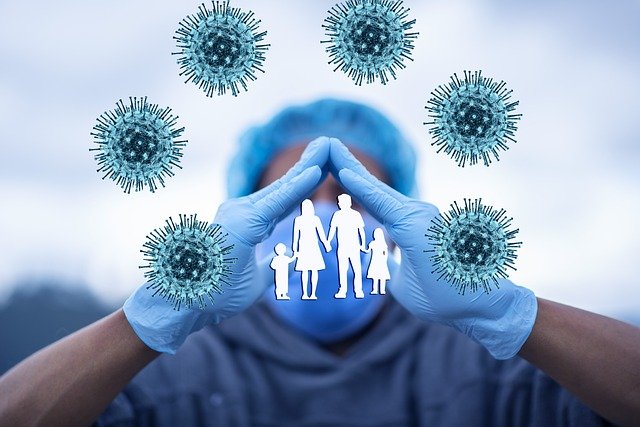The Role of Health Insurance in India: Building Financial Resilience & Advancing Public Health
Introduction
In a country where healthcare inflation outpaces general inflation—hovering at 10–15% per year—and direct OOP payments constitute 62% of all health spending, the role of health insurance becomes indispensable HomePMC. Without insurance, a single hospitalization can wipe out life‑time savings, plunging families into debt or forcing asset sales Open Knowledge Bank. Health insurance mitigates this financial shock by pooling risk, ensuring that individuals pay manageable premiums in exchange for coverage of hospitalization, surgery, and associated costs. Beyond financial security, insurance networks guarantee access to quality providers and foster preventive and primary care through wellness incentives. This article explores the multifaceted role of health insurance in India, examining its impact on financial protection, access, preventive health, economic stability, and progress toward Universal Health Coverage.

1. Financial Protection & Risk Pooling
1.1 Shielding Families from Catastrophic Costs
Healthcare expenses in India can be exorbitant. Advanced diagnostics and tertiary treatments—such as cardiac surgery or cancer therapy—often carry six‑figure price tags in rupees. Health insurance protects policyholders by covering these costs, preventing the depletion of personal savings and reducing reliance on high‑interest loans World Bank Group.
1.2 Risk Pooling Mechanism
The role of health insurance hinges on pooling risk across a large population. Policyholders pay relatively small, predictable premiums into a common fund. When one member incurs high medical expenses, the fund covers their costs. This mechanism distributes financial risk, making healthcare affordable for all members, irrespective of individual health shocks Open Knowledge Bank.
2. Reducing Out‑of‑Pocket Expenditures
2.1 High Out‑of‑Pocket Burden
Direct OOP payments remain one of India’s most regressive healthcare financing methods, accounting for 62% of expenses and pushing 55 million people below the poverty line annually .
2.2 Cashless Treatment Facilities
Most health insurance plans offer cashless hospitalization at empaneled network hospitals. Policyholders present their insurance card and access treatments without upfront payments; insurers settle bills directly with providers. This role of health insurance feature eliminates immediate financial barriers and administrative delays during emergencies World Bank Group.
3. Enhancing Access to Quality Healthcare
3.1 Network of Accredited Providers
Insurers maintain extensive networks of accredited hospitals, clinics, and specialists. By empanelling institutions that meet quality and pricing standards, health insurance ensures policyholders receive timely, standardized care across India’s diverse geographies Home.
3.2 Specialized Care & Secondary Services
Under schemes like PMJAY, secondary and tertiary care—such as cancer and cardiac treatments—are covered without outpatient limitations, bridging critical gaps in healthcare accessibility for low‑income populations Home.
4. Promoting Preventive & Primary Healthcare
4.1 Wellness Riders & Health Check‑Ups
Modern policies incorporate wellness benefits: free annual health check‑ups, vaccination coverage, and lifestyle management programs. These riders incentivize early detection of diseases, reducing the long‑term cost and severity of treatments World Bank.
4.2 Primary Care Integration
By covering pre‑ and post‑hospitalization expenses, including diagnostic tests and follow‑up consultations, insurance policies encourage primary care engagement. This emphasis on early intervention aligns with the role of health insurance in fostering comprehensive healthcare journeys PMC.
5. Economic Stability & Poverty Alleviation
5.1 Preventing Healthcare‑Induced Poverty
World Bank evaluations of India’s Vajpayee Arogyashree Scheme showed a 60% reduction in OOP costs and a 64% decrease in mortality for covered conditions among low‑income groups World Bank Group. Such outcomes underscore how insurance prevents healthcare‑induced poverty.
5.2 Supporting Gig Economy & Informal Workers
The recent extension of PMJAY to cover 1 Crore gig workers—who previously lacked structured social security—addresses a critical vulnerability in India’s 7.7 million‑strong gig workforce, projected to grow to 23.5 million by 2029–30 Business TodayThe Indian Express. This highlights the evolving role of health insurance in economic inclusion.
6. Driving Public Health Goals & Universal Coverage
6.1 Ayushman Bharat & Universal Health Coverage
Launched in 2018, Ayushman Bharat PMJAY provides ₹5 Lakh annual cover to over 300 million economically vulnerable Indians. Its integration with the Ayushman Bharat Digital Mission—creating 73 Crore ABHA health IDs—facilitates seamless data sharing, enhancing continuity of care and monitoring population health trends LinkedIn.
6.2 Contribution to Preventing Catastrophic Expenditure
Empirical studies show participation in government‑sponsored health insurance significantly lowers both absolute and catastrophic health spending, paving the way for national goals of financial protection and equitable care Open Knowledge Bank.
7. Encouraging Healthcare Infrastructure Development
7.1 Incentivizing Quality & Cost Control
Insurance empanelment criteria encourage hospitals to meet quality benchmarks and standardize pricing. Competition among providers for empanelment fosters infrastructure upgrades, benefiting all patients—not just the insured BMJ.
7.2 Data‑Driven Policy Making
Aggregated claims data from insurance pools enable health authorities to identify disease prevalence, utilization patterns, and cost drivers, informing targeted public health interventions and resource allocation PMC.
8. Empowering Vulnerable Populations
8.1 Senior Citizens & Chronic Disease Management
Health insurance plans tailored for senior citizens cover age‑related ailments and outpatient care, ensuring that the elderly can maintain health without depleting retirement funds. Premium discounts and no‑claim bonuses further enhance affordability Wikipedia.
8.2 Low‑Income & Rural Communities
Micro‑insurance products with nominal premiums (₹500–₹2,000 annually) extend coverage to rural populations. These simplified schemes, backed by IRDAI guidelines, cover essential hospitalization services, demonstrating the socio‑economic role of health insurance in rural upliftment World Bank Group.
Conclusion
The role of health insurance in India is multifaceted: it provides crucial financial protection, reduces OOP burdens, guarantees access to quality care, incentivizes preventive health, stabilizes household finances, and propels national public health goals toward Universal Health Coverage. Recent government expansions—like extending PMJAY to gig workers—and digital health initiatives underscore a commitment to inclusive, resilient healthcare financing. As medical costs continue to rise, strengthening both public and private insurance mechanisms remains vital. By recognizing and investing in the comprehensive role of health insurance, India can safeguard its citizens’ health and economic well‑being, laying a robust foundation for a healthier future.

Key Findings
The role of health insurance in India transcends mere financial protection—it underpins equitable access to quality healthcare, reduces catastrophic out‑of‑pocket (OOP) expenditures, fosters preventive care, and drives national public health objectives. Despite medical inflation averaging 10–15% annually, only 18% of urban and 14% of rural Indians hold any health cover, leaving millions vulnerable to debt and impoverishment Wikipedia. Government‑sponsored schemes like Ayushman Bharat (PMJAY) have extended coverage to over 300 million low‑income families, cutting OOP costs by up to 60% and reducing mortality from covered conditions by 64% World Bank Group, World Bank Group. The recent Union Budget 2025 further expanded PMJAY to 1 Crore gig workers—an acknowledgment of the role of health insurance in social equity and economic justice Business Today, The Indian Express. Integrating private and public schemes, bolstered by digital health IDs under Ayushman Bharat Digital Mission, sets India on a path toward Universal Health Coverage by 2047, demonstrating that the role of health insurance is pivotal in safeguarding health, financial resilience, and national well‑being.
